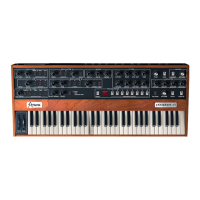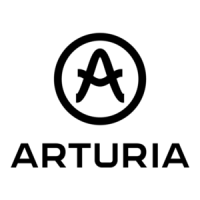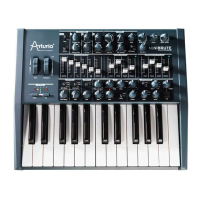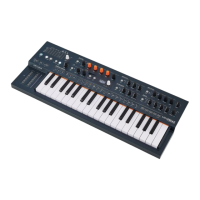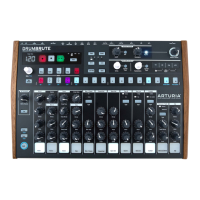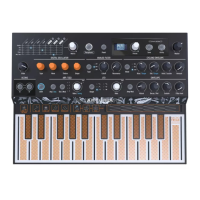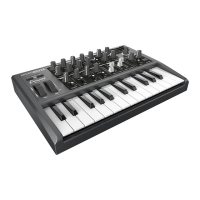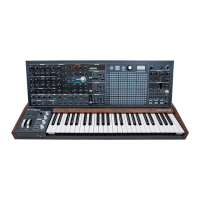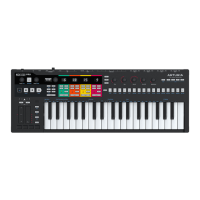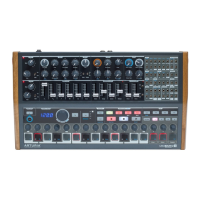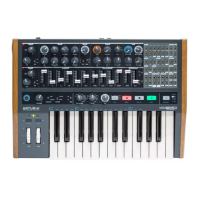Do you have a question about the Arturia PolyBrute and is the answer not in the manual?
Details the core sound generation components: oscillators, filters, LFOs, and envelopes.
Guides on calibrating the analog circuits for pitch and timbre stability.
Walks through initializing, configuring VCOs, VCFs, and Envelopes.
Covers analog drift, auto-tuning, and the core concept of sonic morphing.
Details the features and parameters of VCO 1 and VCO 2, including mixable waveforms.
Explains the Low Frequency Oscillators, their types, modes, and sync options.
Describes the Steiner and Ladder filters, their shared features, and modes.
Details the ADSR envelopes (VCA, VCF) and the DADSR (MOD) envelope.
Covers the pitch/mod wheels and octave transpose functions.
Explains the 3-axis Morphée touchpad and its modes.
Details Polyphony, Unison, Mono modes and Timbrality settings.
Describes the ribbon controller and its unique expressive capabilities.
Explains how to record and play back parameter movements.
Explains how to use and configure the built-in arpeggiator.
Details creating polyphonic sequences with notes, modulations, and step editing.
Details the central control for morphing between sounds A and B.
Details voice parameters for VCO, Envelopes, LFO, and Allocation.
Details the core sound generation components: oscillators, filters, LFOs, and envelopes.
Guides on calibrating the analog circuits for pitch and timbre stability.
Walks through initializing, configuring VCOs, VCFs, and Envelopes.
Covers analog drift, auto-tuning, and the core concept of sonic morphing.
Details the features and parameters of VCO 1 and VCO 2, including mixable waveforms.
Explains the Low Frequency Oscillators, their types, modes, and sync options.
Describes the Steiner and Ladder filters, their shared features, and modes.
Details the ADSR envelopes (VCA, VCF) and the DADSR (MOD) envelope.
Covers the pitch/mod wheels and octave transpose functions.
Explains the 3-axis Morphée touchpad and its modes.
Details Polyphony, Unison, Mono modes and Timbrality settings.
Describes the ribbon controller and its unique expressive capabilities.
Explains how to record and play back parameter movements.
Explains how to use and configure the built-in arpeggiator.
Details creating polyphonic sequences with notes, modulations, and step editing.
Details the central control for morphing between sounds A and B.
Details voice parameters for VCO, Envelopes, LFO, and Allocation.
| Pitch wheel | Yes |
|---|---|
| Product type | Digital synthesizer |
| Product color | Black |
| Sound effects | Delay, Modulation, Reverberation |
| Keyboard number of keys | 61 |
| Preset programs quantity | 768 |
| Maximum polyphony (notes) | 6 |
| Reverberation effects quantity | 9 |
| USB ports quantity | 1 |
| Input voltage | 100-240 V |
| Power source type | AC |
| AC input frequency | 50-60 Hz |
| Depth | 378 mm |
|---|---|
| Width | 972 mm |
| Height | 110 mm |
| Weight | 20000 g |
